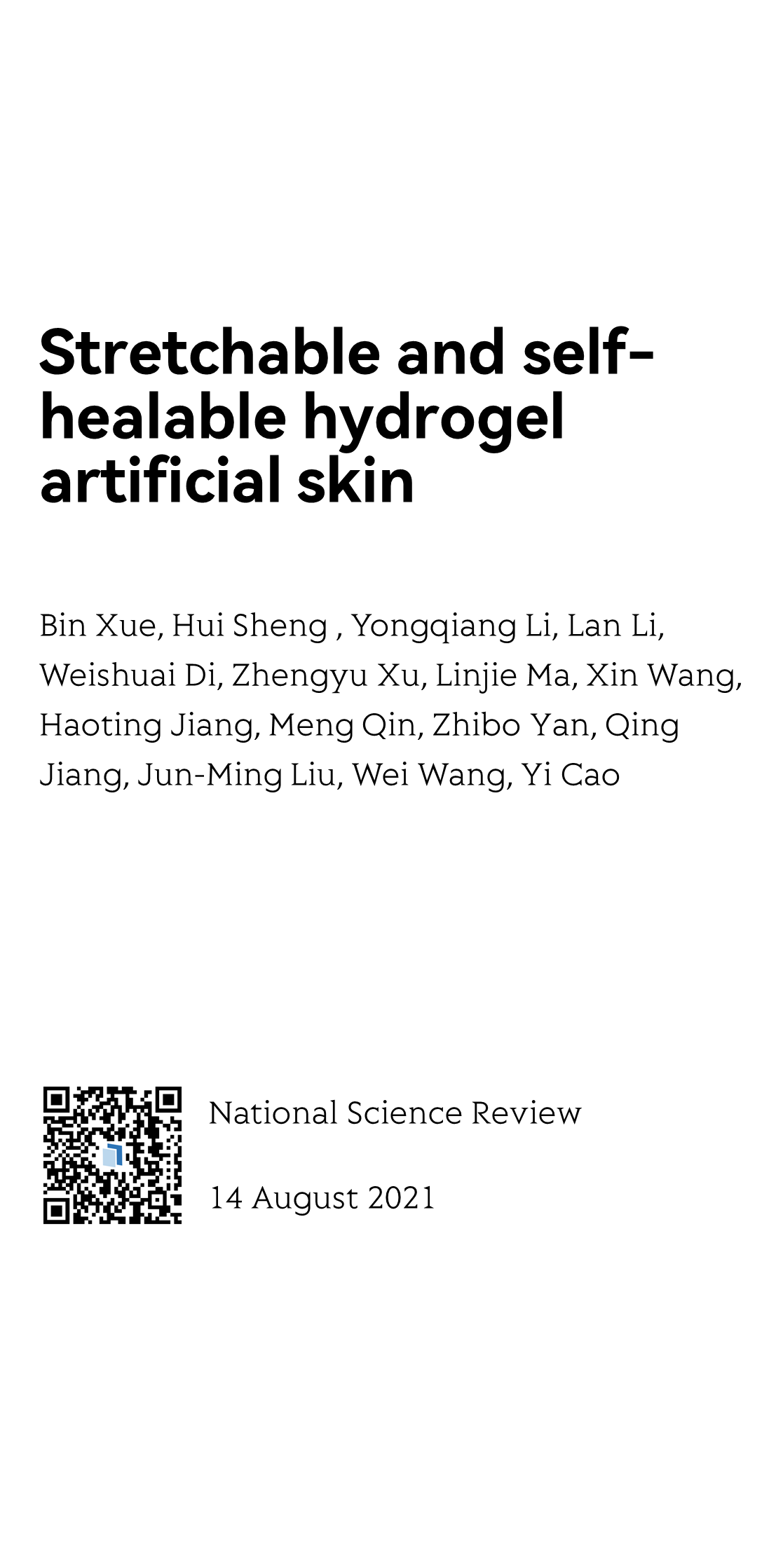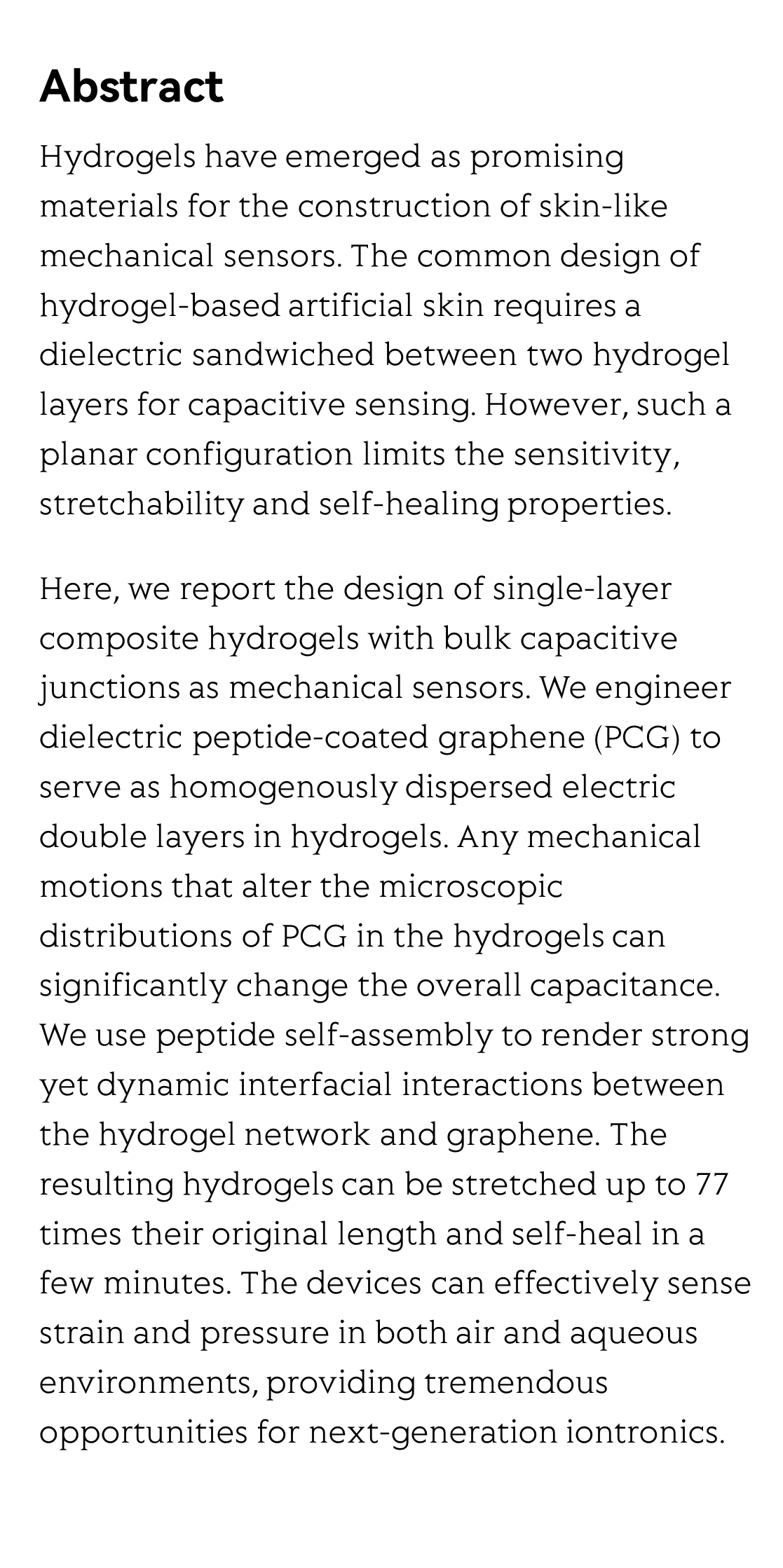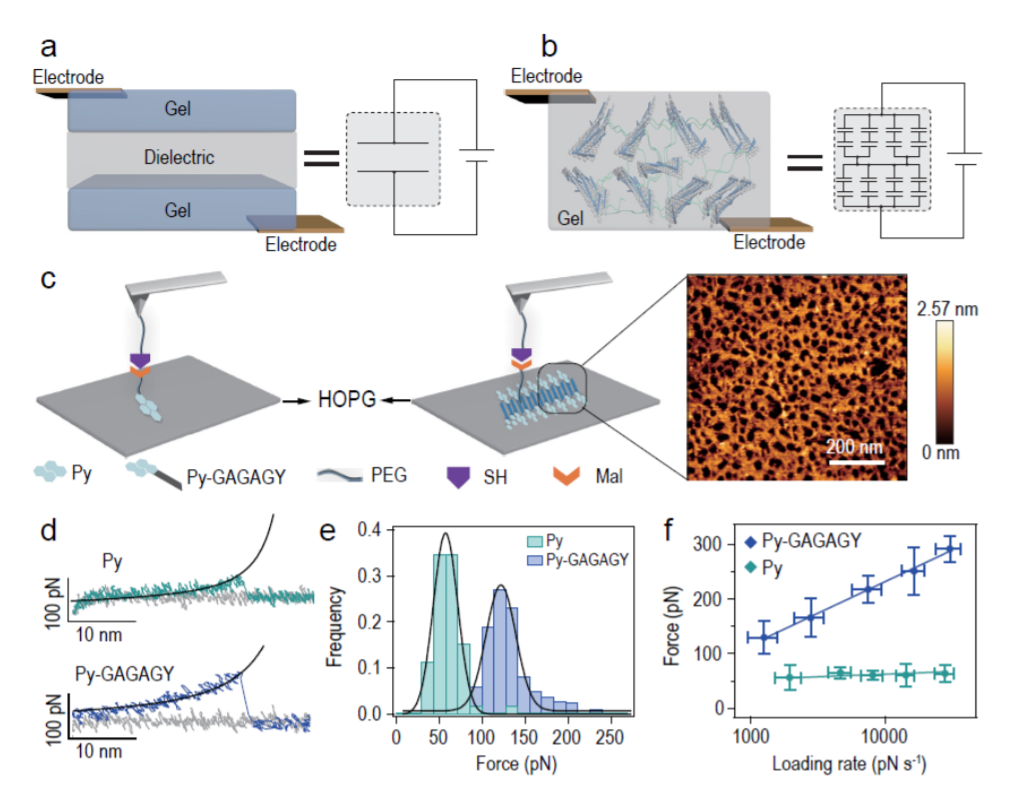(Peer-Reviewed) Stretchable and self-healable hydrogel artificial skin
Bin Xue 薛斌 ¹, Hui Sheng 盛卉 ¹, Yongqiang Li ¹, Lan Li ², Weishuai Di 邸维帅 ¹, Zhengyu Xu 徐铮宇 ¹, Linjie Ma 马林杰 ¹, Xin Wang 王鑫 ¹, Haoting Jiang 姜鹤亭 ¹, Meng Qin 秦猛 ¹, Zhibo Yan ¹, Qing Jiang 蒋青 ², Jun-Ming Liu ¹, Wei Wang 王炜 ¹ ³, Yi Cao 曹毅 ¹ ³ ⁴
¹ National Laboratory of Solid State Microstructures, Department of Physics, Nanjing University, Nanjing 210093, China; 南京大学 物理学院 固体微结构物理国家重点实验室
² State Key Laboratory of Pharmaceutical Biotechnology, Department of Sports Medicine and Adult Reconstructive Surgery, Drum Tower Hospital affiliated to Medical School of Nanjing University, Nanjing 210008, China; 南京大学医学院附属鼓楼医院 运动医学与成人重建外科 医药生物技术国家重点实验室
³ Institute for Brain Sciences, Nanjing University, Nanjing 210093, China; 南京大学 脑科学研究院
⁴ Chemistry and Biomedicine Innovation Center, Nanjing University, Nanjing 210093, China 南京大学 化学和生物医药创新研究院
National Science Review
, 2021-08-14
Abstract
Hydrogels have emerged as promising materials for the construction of skin-like mechanical sensors. The common design of hydrogel-based artificial skin requires a dielectric sandwiched between two hydrogel layers for capacitive sensing. However, such a planar configuration limits the sensitivity, stretchability and self-healing properties.
Here, we report the design of single-layer composite hydrogels with bulk capacitive junctions as mechanical sensors. We engineer dielectric peptide-coated graphene (PCG) to serve as homogenously dispersed electric double layers in hydrogels. Any mechanical motions that alter the microscopic distributions of PCG in the hydrogels can significantly change the overall capacitance. We use peptide self-assembly to render strong yet dynamic interfacial interactions between the hydrogel network and graphene. The resulting hydrogels can be stretched up to 77 times their original length and self-heal in a few minutes. The devices can effectively sense strain and pressure in both air and aqueous environments, providing tremendous opportunities for next-generation iontronics.
Flicker minimization in power-saving displays enabled by measurement of difference in flexoelectric coefficients and displacement-current in positive dielectric anisotropy liquid crystals
Junho Jung, HaYoung Jung, GyuRi Choi, HanByeol Park, Sun-Mi Park, Ki-Sun Kwon, Heui-Seok Jin, Dong-Jin Lee, Hoon Jeong, JeongKi Park, Byeong Koo Kim, Seung Hee Lee, MinSu Kim
Opto-Electronic Advances
2025-09-25
Dual-frequency angular-multiplexed fringe projection profilometry with deep learning: breaking hardware limits for ultra-high-speed 3D imaging
Wenwu Chen, Yifan Liu, Shijie Feng, Wei Yin, Jiaming Qian, Yixuan Li, Hang Zhang, Maciej Trusiak, Malgorzata Kujawinska, Qian Chen, Chao Zuo
Opto-Electronic Advances
2025-09-25





